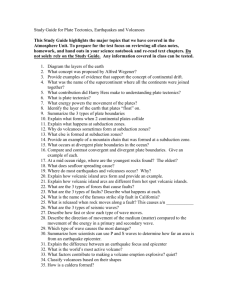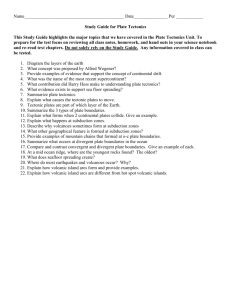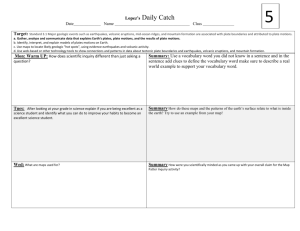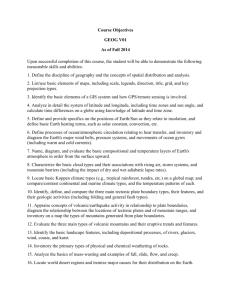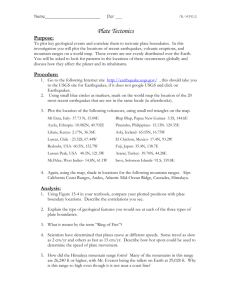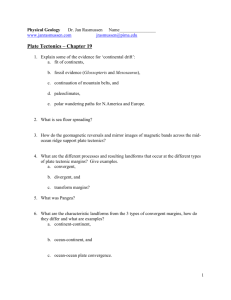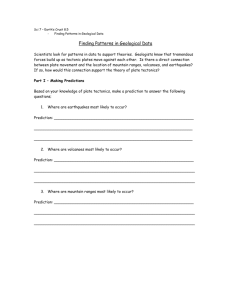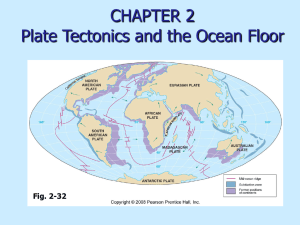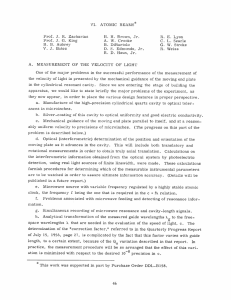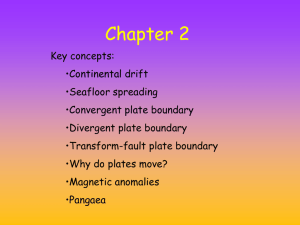GEOL 101 Fall 2003
advertisement
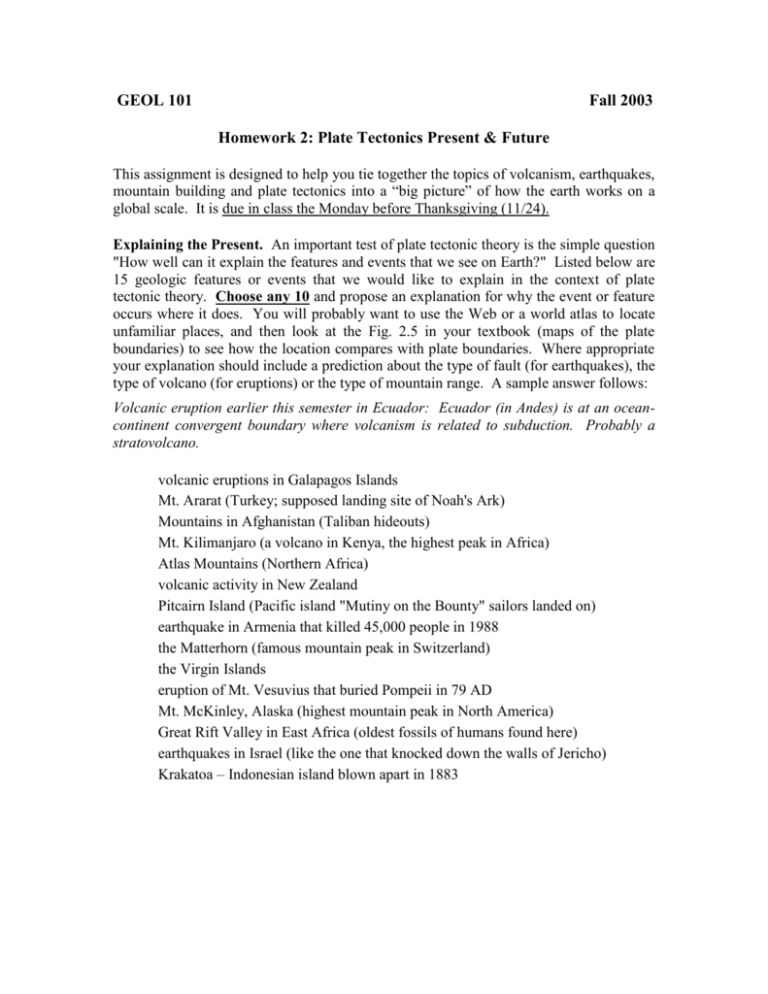
GEOL 101 Fall 2003 Homework 2: Plate Tectonics Present & Future This assignment is designed to help you tie together the topics of volcanism, earthquakes, mountain building and plate tectonics into a “big picture” of how the earth works on a global scale. It is due in class the Monday before Thanksgiving (11/24). Explaining the Present. An important test of plate tectonic theory is the simple question "How well can it explain the features and events that we see on Earth?" Listed below are 15 geologic features or events that we would like to explain in the context of plate tectonic theory. Choose any 10 and propose an explanation for why the event or feature occurs where it does. You will probably want to use the Web or a world atlas to locate unfamiliar places, and then look at the Fig. 2.5 in your textbook (maps of the plate boundaries) to see how the location compares with plate boundaries. Where appropriate your explanation should include a prediction about the type of fault (for earthquakes), the type of volcano (for eruptions) or the type of mountain range. A sample answer follows: Volcanic eruption earlier this semester in Ecuador: Ecuador (in Andes) is at an oceancontinent convergent boundary where volcanism is related to subduction. Probably a stratovolcano. volcanic eruptions in Galapagos Islands Mt. Ararat (Turkey; supposed landing site of Noah's Ark) Mountains in Afghanistan (Taliban hideouts) Mt. Kilimanjaro (a volcano in Kenya, the highest peak in Africa) Atlas Mountains (Northern Africa) volcanic activity in New Zealand Pitcairn Island (Pacific island "Mutiny on the Bounty" sailors landed on) earthquake in Armenia that killed 45,000 people in 1988 the Matterhorn (famous mountain peak in Switzerland) the Virgin Islands eruption of Mt. Vesuvius that buried Pompeii in 79 AD Mt. McKinley, Alaska (highest mountain peak in North America) Great Rift Valley in East Africa (oldest fossils of humans found here) earthquakes in Israel (like the one that knocked down the walls of Jericho) Krakatoa – Indonesian island blown apart in 1883 Predicting the future. Based on our knowledge of present day plate motions, we can make some predictions about how the Earth will look different in the future. The following questions are based on figures in your textbook. 1. There is a common misconception that California will someday “break off” and sink into the sea. While this is false, it is true that the western part of California is slowly heading northward out to sea. Based on Fig. 10.15, approximately how long will it take before San Francisco “slides out to sea” (i.e., becomes a peninsula)? (The scale of this map is 150 km per cm.) Show your work. 2. Based on GPS measurements (Fig. 2.13), which continent (and plate) is moving the fastest? How far and in what direction has this continent moved since you were born? 3. Where will the next new subduction zone appear? Look at Fig. 2.14 to locate the oldest oceanic crust. If new subduction zones form when the age of oceanic crust reaches about 200 m.y., about how long will it be before this new subduction zone appears? 4. Based on looking at Fig. 2.5, where do you think the next fold-and-thrust mountain range will appear (i.e., what land masses will collide next)? 5. Based on looking at Fig. 2.5, how will the Mediterranean differ in the future?

